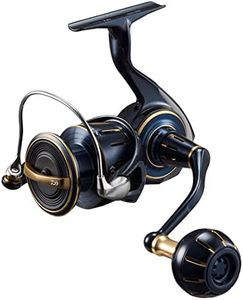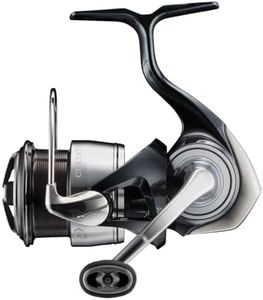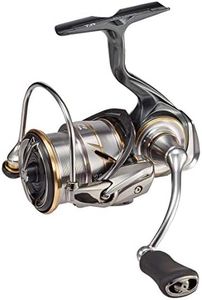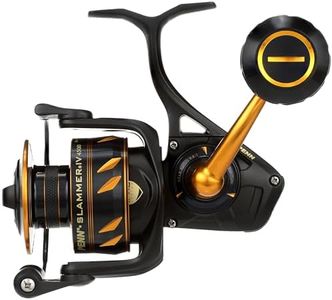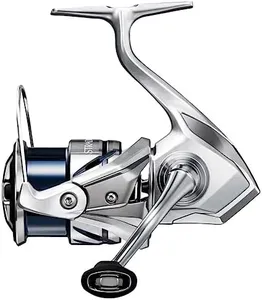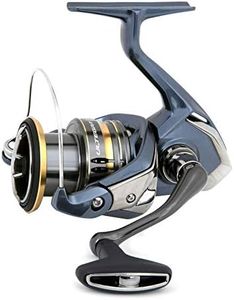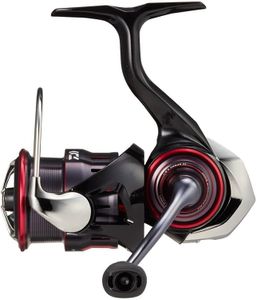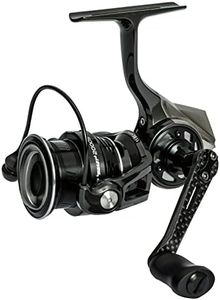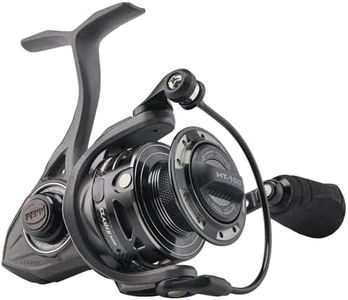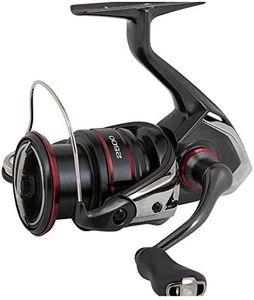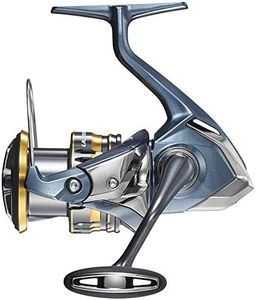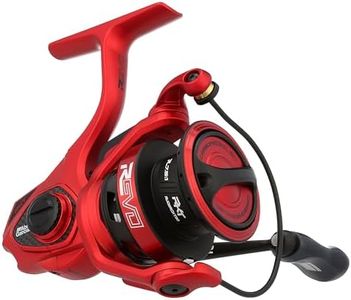We Use CookiesWe use cookies to enhance the security, performance,
functionality and for analytical and promotional activities. By continuing to browse this site you
are agreeing to our privacy policy
10 Best Spinning Reels
From leading brands and best sellers available on the web.By clicking on a link to a third party's website, log data is shared with that third party.
Buying Guide for the Best Spinning Reels
Spinning reels are a popular choice for many anglers because of their versatility and ease of use. Whether you are fishing in freshwater or saltwater, choosing the right spinning reel can make your fishing experience smoother and more enjoyable. The key to picking the best spinning reel for you is to understand the main features and specifications, and think about how and where you plan to fish. Focusing on these factors will help you select a reel that matches your needs and skill level.Reel SizeReel size refers to the overall size of the spinning reel and determines how much line it can hold as well as what size fish it can handle. Smaller reels (usually labeled 1000 to 2500) are light and ideal for targeting smaller fish species in ponds, creeks, and light freshwater fishing. Medium sizes (3000 to 4000) offer more versatility for both freshwater and some inshore saltwater fishing, handling larger fish with more line capacity. Larger sizes (5000 and up) are designed for big fish and surf or deep-sea fishing. To pick the right reel size, think about the type of water you'll be fishing in and the size of fish you're most likely to catch.
Gear RatioThe gear ratio tells you how many times the spool turns for each turn of the reel handle. A low gear ratio (around 4:1 to 5:1) means the reel will retrieve line more slowly, providing more torque for reeling in heavy or hard-fighting fish, which is good for bottom fishing or larger species. Medium (around 5.5:1 to 6:1) is great for all-purpose fishing. High gear ratios (over 6:1) are designed for quickly retrieving lures, which is useful for certain fishing techniques. Your choice should depend on the fishing style you prefer—choose lower ratios for power and higher ratios for speed.
Line CapacityLine capacity is how much fishing line the spool can hold, often written as a combination such as '8lb/200yds' (meaning it holds 200 yards of 8-pound line). More line capacity is needed for larger fish that may run farther through long fights, or for fishing in deep water where more line may be used. If you're fishing for smaller species in shallow waters, a lower line capacity will be fine. Choose a line capacity that fits the type of fishing you plan to do most often.
Drag SystemThe drag system allows you to set how much resistance a fish feels when it pulls on your line. A smooth and strong drag is important to prevent line breakage when fighting bigger fish. Lighter drags (rated for lower pounds) are sufficient for smaller species, while heavier drags are necessary if you expect to battle larger or more powerful fish. Matching the drag strength to the line and fish you target ensures a better fishing experience.
Ball BearingsBall bearings inside the reel make it operate smoothly. More bearings generally mean smoother performance, but the quality of the bearings is also important. Basic reels have fewer (around 3-4), while high-end reels may have 7 or more. For weekend and beginner anglers, a moderate amount of good-quality bearings (5-6) provides a nice balance. If you want extra smoothness for casting and retrieving, look for reels with more bearings.
Reel Body MaterialSpinning reels are commonly made from materials like graphite, aluminum, or a combination. Graphite is lighter and more resistant to corrosion, making it a good choice for long fishing sessions or saltwater use. Aluminum is stronger and usually more durable, but a bit heavier. If you value lightweight gear for easy handling, graphite is the way to go. If you need toughness for heavier use, consider aluminum or hybrids.
Handle Design and ComfortThe reel handle should feel comfortable in your hand, especially during longer fishing trips. Handles can be made from rubber, EVA foam, or hard plastic, and may come in single or double configurations. Ergonomic and non-slip designs provide better grip and comfort. If you have larger hands or fish for long periods, a bigger or padded handle is helpful. Try to choose a handle that feels comfortable and fits your preferred fishing style.
